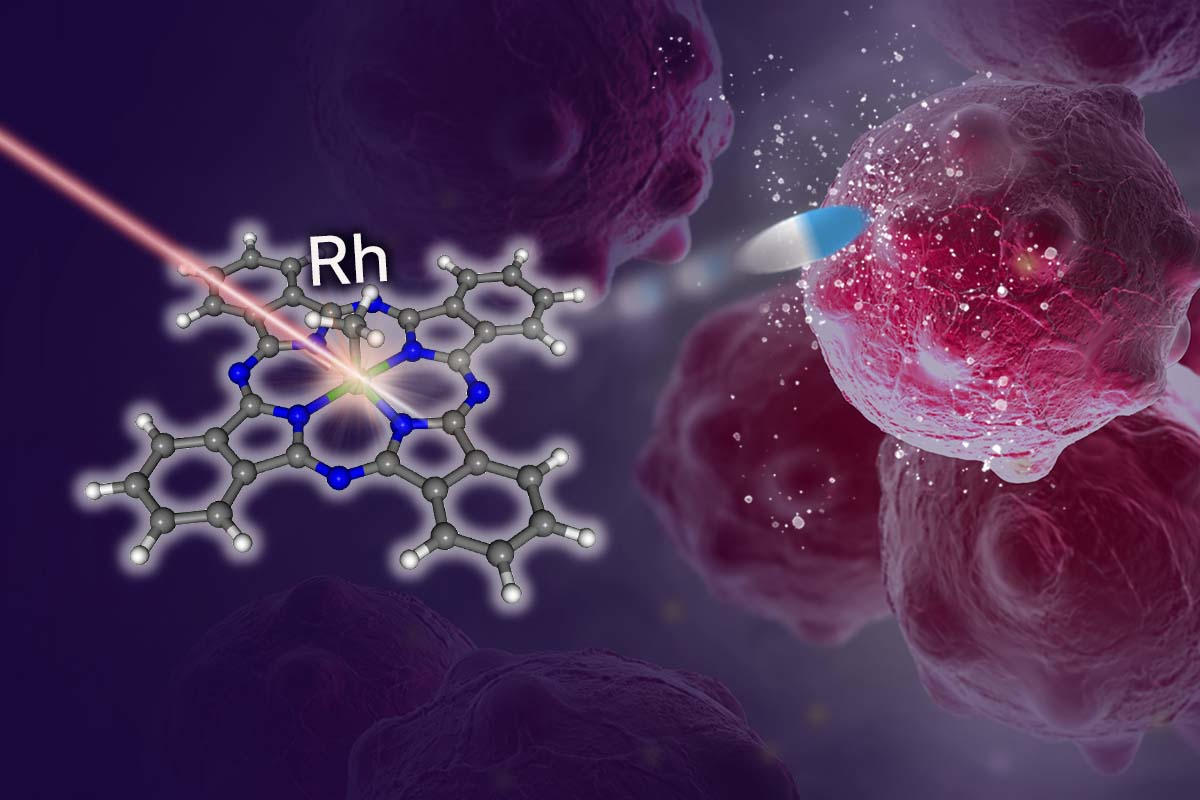Researchers from The Institute of Industrial Science, The University of Tokyo have developed a streamlined photo-uncaging system for photodynamic cancer therapy, using a pulse of light for tumor-specific activation of a cancer-fighting agent. Credit: Institute of Industrial Science, The University of Tokyo
A new cancer treatment system
Photodynamic therapy, which uses photo-uncaging systems to activate a cancer-fighting agent in situ at the tumor, is one method of treating cancer. However, suitable agents must be visible light stable, have an anti-tumor effect in low-oxygen settings, and be triggered by low-energy tissue-penetrative red light – a tough combination of properties to obtain. A team from The Institute of Industrial Science at The University of Tokyo has now created a new platform that employs organorhodium(III) phthalocyanine complexes for the first time to achieve this combination of properties.
Conventional photodynamic methods rely on the production of reactive oxygen species to kill tumor cells, however, many cancers have environments lacking oxygen. This problem is addressed by photo-uncaging systems, in which the agent is administered in an inactive form and subsequently activated, or “uncaged,” at the location of the tumor.
They uncage alkyl radicals, which are known to be capable of inducing cell death both with and without the presence of oxygen. Alkyl radicals are converted into terminal aldehydes in the presence of oxygen, and these terminal aldehydes can also induce cell death. The team used molecules called “organorhodium(III) phthalocyanine (Pc) complexes” to develop, for the first time, a novel platform for photo-uncaging therapy.
“The organorhodium(III) phthalocyanine (Pc) complexes we developed are highly stable under ambient light during the processes of synthesis, purification, and measurement, but can be activated by a laser that gives out nanosecond pulses of red light,” explains lead author Kei Murata. These nanosecond-pulsing lasers (pulsing for a billionth of a second) are relatively easy for medical staff to handle.
They went on to show that the compounds that were released after the organorhodium(III) phthalocyanine (Pc) complexes were activated showed toxicity to HeLa cells, a cell line developed from cancer, indicating that these compounds would have the ability to fight cancer if released inside a tumor.
“Our new technology could allow the photochemical generation of a wide variety of alkyl radicals and aldehydes, making possible the site-selective release of various bioactive molecules,” says senior author Kazuyuki Ishii. As an improvement on other photo-uncaging systems, it opens an exciting new avenue for the treatment of cancer by phototherapy.
Reference: “Two-photon, red light uncaging of alkyl radicals from organorhodium(iii) phthalocyanine complexes” by Kei Murata, Yuki Saibe, Mayu Uchida, Mizuki Aono, Ryuji Misawa, Yoshiho Ikeuchi and Kazuyuki Ishii, 20 September 2022, Chemical Communications.
DOI: 10.1039/D2CC03672J
Share your story or advertise with us: Whatsapp: +2347068606071 Email: info@newspotng.com















